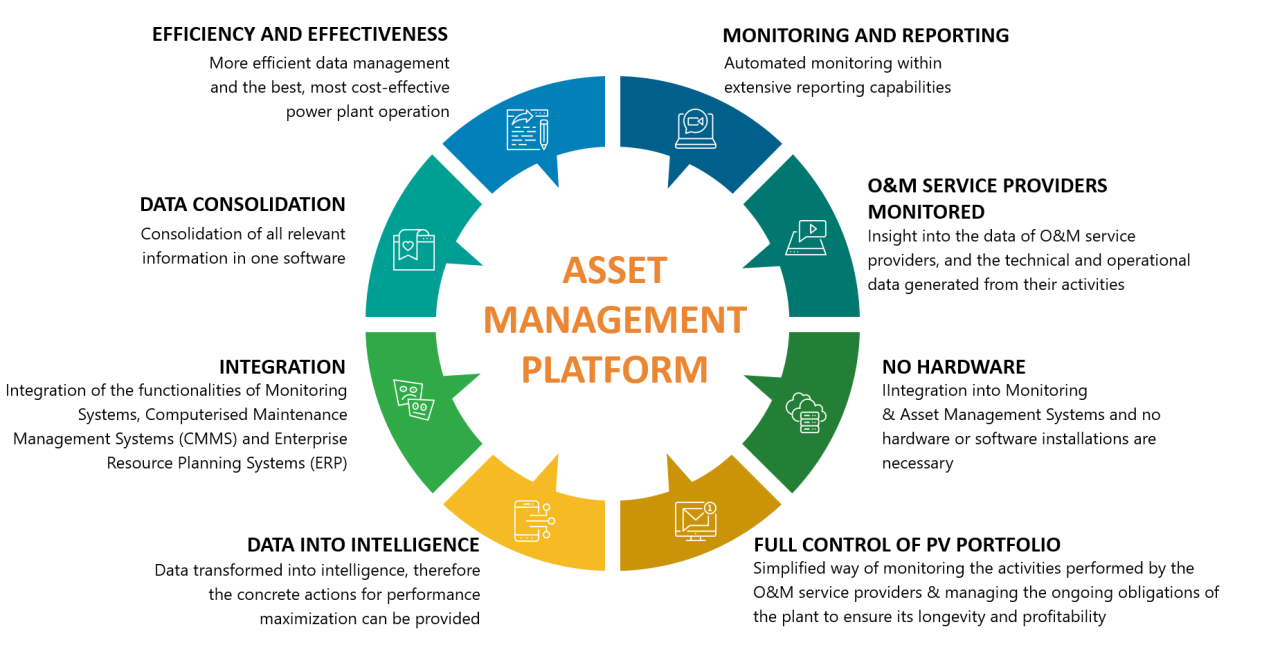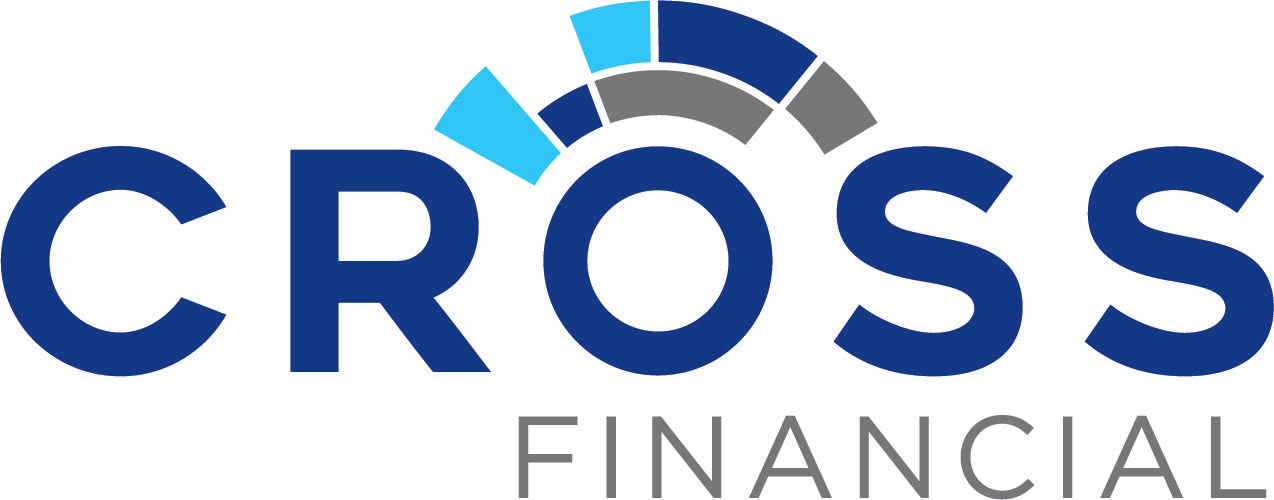Asset Management Technology Trends: Shaping the Future of Investing
Asset management technology trends are revolutionizing the way investors manage their portfolios. The industry is rapidly embracing digitalization, data-driven approaches, and cutting-edge technologies like artificial intelligence (AI) and machine learning […]

Asset management technology trends are revolutionizing the way investors manage their portfolios. The industry is rapidly embracing digitalization, data-driven approaches, and cutting-edge technologies like artificial intelligence (AI) and machine learning (ML). These advancements are transforming how asset managers analyze markets, assess risks, and make investment decisions, ultimately leading to more efficient and sophisticated investment strategies.
This dynamic landscape is driven by a confluence of factors, including the increasing availability of data, the rise of sophisticated analytical tools, and the need for greater transparency and accountability in the financial industry. As we delve deeper into the trends shaping asset management technology, we’ll explore how these innovations are impacting the industry and what the future holds for investors.
The Evolving Landscape of Asset Management Technology
Asset management technology has undergone a dramatic transformation, driven by technological advancements, evolving investor demands, and the increasing complexity of financial markets. From the early days of manual record-keeping to today’s sophisticated data-driven platforms, the industry has embraced innovation to enhance efficiency, improve investment outcomes, and adapt to the ever-changing regulatory landscape.
The Historical Evolution of Asset Management Technology
The history of asset management technology can be traced back to the early days of the industry, when manual processes and rudimentary tools were the norm. Key milestones and innovations have shaped the industry’s evolution, paving the way for the sophisticated technology solutions we see today.
- Early Days (1950s-1970s): Manual record-keeping, basic calculators, and limited data analysis characterized this era. Investment decisions were largely based on intuition and experience.
- The Rise of Computers (1980s-1990s): The introduction of personal computers and spreadsheets revolutionized data management and analysis. Asset managers began to leverage quantitative methods and statistical models to support investment decisions.
- The Internet Era (2000s-Present): The internet and the rise of online trading platforms transformed the way investors accessed financial markets. Asset managers adopted web-based systems for portfolio management, client communication, and reporting.
- The Big Data Revolution (2010s-Present): The explosion of data availability, driven by the internet and social media, ushered in a new era of data-driven asset management. Advanced analytics, machine learning, and artificial intelligence are now used to identify investment opportunities, manage risk, and personalize client experiences.
The Rise of Digitalization and Data-Driven Approaches
Digitalization is rapidly transforming the asset management industry, enabling greater efficiency, enhanced transparency, and improved investment outcomes. Data-driven approaches are becoming increasingly prevalent, leveraging vast amounts of data to gain insights, automate processes, and personalize investment strategies.
- Data Analytics: Asset managers are leveraging data analytics to identify investment trends, assess risk, and optimize portfolio construction. Advanced analytics tools enable them to extract meaningful insights from diverse data sources, including market data, economic indicators, and client information.
- Artificial Intelligence (AI): AI algorithms are being used to automate tasks, enhance investment decision-making, and personalize client experiences. For example, AI-powered chatbots can provide 24/7 customer support, while machine learning algorithms can identify potential investment opportunities and manage risk.
- Cloud Computing: Cloud-based platforms offer scalability, flexibility, and cost-effectiveness, enabling asset managers to access and manage data securely from anywhere in the world. Cloud computing also facilitates collaboration among teams and enhances data security.
The Impact of Regulatory Changes and Market Volatility
The asset management industry is subject to constant regulatory scrutiny and evolving market conditions. Regulatory changes, such as the Dodd-Frank Act in the United States, have led to increased compliance requirements and a need for more robust technology solutions. Market volatility, driven by factors such as geopolitical events and economic uncertainty, also necessitates sophisticated risk management tools and strategies.
- Regulatory Compliance: Regulatory changes have imposed stricter reporting requirements and data security standards on asset managers. Technology solutions are essential for meeting these compliance obligations and ensuring regulatory adherence.
- Risk Management: Market volatility necessitates sophisticated risk management tools and strategies. Advanced analytics and AI algorithms can help asset managers identify and mitigate potential risks, improving portfolio resilience and investor confidence.
- Transparency and Reporting: Investors increasingly demand transparency and detailed reporting on their investments. Technology solutions enable asset managers to provide timely and accurate information to clients, enhancing trust and investor satisfaction.
Artificial Intelligence (AI) and Machine Learning (ML) in Asset Management

AI and ML are revolutionizing asset management by enabling more sophisticated and data-driven investment strategies. These technologies are transforming how portfolio managers construct, manage, and optimize investment portfolios.
Enhanced Portfolio Construction
AI and ML algorithms can analyze vast amounts of data, including historical market trends, economic indicators, and company financials, to identify investment opportunities and construct diversified portfolios. They can help managers build portfolios that align with specific investment goals, risk tolerance, and time horizons.
Advanced Risk Management
AI and ML algorithms can identify and assess various risks, including market risk, credit risk, and operational risk. They can help managers develop more accurate risk models, monitor portfolio performance, and make informed decisions to mitigate potential losses.
Improved Investment Decision-Making
AI and ML can analyze news articles, social media posts, and other data sources to gauge market sentiment and predict future market movements. They can also identify emerging trends and opportunities, providing valuable insights for investment decision-making.
Examples of AI-Powered Tools
- Market analysis tools: AI-powered platforms can analyze market data, identify trends, and generate trading signals based on real-time information.
- Sentiment analysis tools: These tools use natural language processing (NLP) to analyze news articles, social media posts, and other text data to gauge market sentiment and identify potential investment opportunities.
- Predictive modeling tools: AI and ML algorithms can be used to build predictive models that forecast future market movements, asset prices, and portfolio performance.
Ethical Considerations and Challenges
- Bias and fairness: AI algorithms can inherit biases from the data they are trained on, leading to unfair or discriminatory investment decisions.
- Transparency and explainability: It can be challenging to understand how AI algorithms make decisions, making it difficult to assess their reliability and trustworthiness.
- Data privacy and security: AI systems require access to large amounts of sensitive data, raising concerns about data privacy and security.
Data Analytics and Big Data in Asset Management: Asset Management Technology Trends
The integration of data analytics and big data into asset management has revolutionized the industry, providing asset managers with powerful tools to enhance investment decision-making, mitigate risks, and optimize portfolio performance. This section will delve into the role of data analytics in identifying investment opportunities, managing risk, and optimizing portfolio performance, while also exploring the use of big data techniques for market sentiment analysis, trend identification, and anomaly detection.
Identifying Investment Opportunities
Data analytics plays a crucial role in identifying potential investment opportunities by providing insights into market trends, company performance, and economic indicators. Asset managers leverage data analytics to analyze vast amounts of data from various sources, including financial statements, news articles, social media, and economic data.
For example, data analytics can be used to identify companies with strong growth potential by analyzing their financial performance, market share, and competitive landscape. This information can be used to build a portfolio of stocks with high growth potential, leading to superior returns.
Managing Risk, Asset management technology trends
Data analytics helps asset managers effectively manage risk by providing a comprehensive understanding of potential threats to their portfolios. This includes identifying market volatility, credit risk, and regulatory changes.
Asset managers use data analytics to:
- Develop risk models that accurately assess the potential impact of various factors on portfolio performance.
- Identify and mitigate potential risks by implementing appropriate hedging strategies.
- Monitor portfolio performance and make adjustments as needed to maintain risk tolerance.
Optimizing Portfolio Performance
Data analytics enables asset managers to optimize portfolio performance by identifying inefficiencies and improving asset allocation strategies. By analyzing historical data and market trends, asset managers can develop customized investment strategies that align with their clients’ risk tolerance and investment objectives.
Market Sentiment Analysis
Big data techniques, such as natural language processing (NLP), are used to analyze market sentiment by extracting information from news articles, social media posts, and online forums. This information can be used to gauge market sentiment and identify potential market shifts.
For example, an asset manager might analyze news articles and social media posts to determine investor sentiment towards a particular sector. If the sentiment is negative, the asset manager might consider reducing their exposure to that sector.
Trend Identification
Big data techniques can be used to identify emerging trends in the market, such as changes in consumer behavior or technological advancements. This information can be used to identify investment opportunities in sectors that are poised for growth.
For example, an asset manager might use big data to analyze consumer spending patterns and identify emerging trends in the e-commerce sector. This information can be used to invest in companies that are well-positioned to capitalize on these trends.
Anomaly Detection
Big data techniques can also be used to identify anomalies in market data, such as unusual trading patterns or price fluctuations. This information can be used to identify potential fraud or market manipulation.
For example, an asset manager might use big data to analyze trading activity in a particular stock and identify unusual patterns that suggest potential insider trading.
Cloud Computing and Infrastructure
Cloud computing has emerged as a transformative force in asset management, enabling firms to leverage powerful computing resources and data storage capabilities without the need for significant upfront investments in hardware and infrastructure.
Benefits of Cloud Computing for Asset Management
Cloud computing offers a range of advantages that can significantly enhance the efficiency and effectiveness of asset management operations.
- Scalability: Cloud platforms provide the flexibility to scale computing resources up or down as needed, allowing asset managers to adapt to fluctuating workloads and manage peak demands without investing in expensive hardware upgrades. This agility enables them to handle large data volumes, run complex simulations, and support growing client bases.
- Cost-Effectiveness: By eliminating the need for significant upfront investments in hardware and infrastructure, cloud computing offers significant cost savings. Asset managers can pay only for the resources they use, reducing capital expenditure and optimizing operational expenses. This pay-as-you-go model allows for better resource allocation and cost control.
- Enhanced Security: Cloud providers invest heavily in robust security measures to protect sensitive data and systems from cyber threats. These measures often surpass the security capabilities of individual firms, offering a higher level of protection against data breaches and other security risks.
Cloud Platforms in Asset Management
Asset managers utilize a variety of cloud platforms to meet their specific needs and preferences.
- Amazon Web Services (AWS): AWS is a leading cloud provider offering a comprehensive suite of services, including compute, storage, database, networking, and analytics. Its global infrastructure and extensive feature set make it a popular choice for asset managers of all sizes.
- Microsoft Azure: Azure is another major cloud platform known for its integration with Microsoft products and services. It offers a wide range of tools and services for data management, application development, and artificial intelligence.
- Google Cloud Platform (GCP): GCP is a rapidly growing cloud platform known for its strong focus on data analytics and machine learning. Its advanced tools and services cater to asset managers seeking to leverage data-driven insights.
Examples of Cloud-Based Solutions in Asset Management
Cloud computing is transforming various aspects of asset management, enabling firms to streamline operations and improve efficiency.
- Portfolio Management Systems: Cloud-based portfolio management systems provide a centralized platform for managing investments, tracking performance, and generating reports. These systems offer real-time data access, improved collaboration, and enhanced security features.
- Risk Management and Compliance: Cloud-based solutions for risk management and compliance enable asset managers to monitor market risks, conduct stress testing, and ensure adherence to regulatory requirements. These solutions provide automated workflows, real-time data analysis, and comprehensive reporting capabilities.
- Data Analytics and Reporting: Cloud-based data analytics platforms empower asset managers to extract valuable insights from vast amounts of data. These platforms offer advanced tools for data visualization, predictive modeling, and reporting, enabling firms to make more informed investment decisions.
Cybersecurity and Data Protection
Cybersecurity is paramount in asset management, where sensitive financial data is constantly at risk. The industry faces an evolving threat landscape, demanding robust security measures to protect assets and client information.
The Importance of Cybersecurity in Asset Management
The asset management industry relies heavily on the confidentiality, integrity, and availability of financial data. A breach can lead to significant financial losses, reputational damage, and legal consequences. The sensitive nature of this data, including client identities, investment strategies, and market positions, makes it a prime target for cybercriminals.
Evolving Threats and Vulnerabilities
The threat landscape is constantly evolving, with cyberattacks becoming increasingly sophisticated. Asset managers face various threats, including:
- Cyberattacks: These include ransomware attacks, phishing scams, and distributed denial-of-service (DDoS) attacks, all aiming to disrupt operations, steal data, or extort money.
- Data Breaches: Unauthorized access to sensitive data can compromise client information, investment strategies, and market positions, leading to financial losses and reputational damage.
- Insider Threats: Employees with access to sensitive data can pose a significant risk, intentionally or unintentionally, through negligence or malicious intent.
Best Practices for Data Protection
To mitigate these risks, asset managers must adopt a comprehensive cybersecurity strategy that includes:
- Strong Access Control: Implement robust access controls to limit access to sensitive data based on need-to-know principles, using multi-factor authentication and role-based access control.
- Data Encryption: Encrypt sensitive data at rest and in transit to protect it from unauthorized access even if the system is compromised.
- Regular Security Audits: Conduct regular security audits to identify vulnerabilities and ensure compliance with industry standards and regulations.
- Employee Training: Educate employees on cybersecurity best practices, including phishing awareness, password hygiene, and data handling protocols, to reduce the risk of insider threats.
- Incident Response Plan: Develop a comprehensive incident response plan to handle security breaches effectively, including steps for containment, recovery, and communication.
Compliance with Regulations
Asset managers must comply with relevant regulations, such as the General Data Protection Regulation (GDPR) and the California Consumer Privacy Act (CCPA), to protect client data and avoid legal penalties. These regulations Artikel strict requirements for data protection, privacy, and security, requiring asset managers to implement robust security measures and demonstrate compliance.
Regulatory Technology (RegTech) in Asset Management
RegTech, or regulatory technology, is revolutionizing the asset management industry by leveraging technology to automate compliance processes, enhance risk management, and improve transparency. These solutions are helping asset managers navigate the increasingly complex regulatory landscape and achieve greater efficiency and effectiveness.
Impact of RegTech on Regulatory Reporting
RegTech solutions are streamlining regulatory reporting by automating data collection, processing, and submission. This reduces manual effort, minimizes errors, and ensures timely and accurate reporting. For instance, RegTech platforms can integrate with various data sources, validate data against regulatory requirements, and generate reports in the required formats. Asset managers can benefit from automated data extraction, validation, and reporting, freeing up resources for more strategic tasks.
Impact of RegTech on KYC/AML Compliance
Know Your Customer (KYC) and Anti-Money Laundering (AML) compliance are crucial for asset managers. RegTech solutions are automating KYC/AML processes, such as customer due diligence, identity verification, and transaction monitoring. For example, AI-powered KYC platforms can analyze vast amounts of data to identify potential risks and automate the onboarding process. This improves efficiency, reduces manual errors, and enhances the accuracy of KYC/AML compliance.
Impact of RegTech on Fraud Detection
RegTech solutions are enhancing fraud detection capabilities by leveraging AI and machine learning algorithms. These solutions can analyze large datasets to identify patterns and anomalies that may indicate fraudulent activity. RegTech platforms can also monitor transactions in real-time and trigger alerts when suspicious activities are detected. This helps asset managers proactively identify and mitigate fraud risks, safeguarding their assets and clients’ investments.
Examples of RegTech Tools and Platforms
Several RegTech tools and platforms are available to asset managers to streamline compliance efforts.
- Automated Compliance Monitoring Platforms: These platforms use AI and ML algorithms to monitor compliance with regulatory requirements, identify potential violations, and generate alerts. This helps asset managers stay ahead of regulatory changes and ensure ongoing compliance.
- KYC/AML Due Diligence Tools: These tools automate the KYC/AML process, including customer identity verification, background checks, and risk assessment. They help asset managers comply with KYC/AML regulations and reduce the risk of financial crime.
- Regulatory Reporting Software: These platforms streamline regulatory reporting by automating data collection, processing, and submission. They ensure timely and accurate reporting, reducing manual effort and minimizing errors.
The Future of Asset Management Technology
The asset management industry is on the cusp of a technological revolution, driven by emerging trends that promise to transform investment strategies, risk management, and client engagement. This section explores some of the most promising advancements, including blockchain, quantum computing, and natural language processing, and examines their potential impact on the industry.
Blockchain Technology
Blockchain technology is a decentralized, distributed ledger that records transactions in a secure and transparent manner. Its immutability and transparency make it ideal for asset management, where trust and security are paramount.
- Enhanced Security and Transparency: Blockchain’s distributed ledger system eliminates the need for a central authority, reducing the risk of fraud and data breaches. This enhanced transparency and immutability can build trust among investors and improve accountability within the asset management ecosystem.
- Streamlined Operations: Blockchain can streamline asset management processes by automating tasks such as trade execution, settlement, and custody. This automation can lead to significant cost savings and improved efficiency.
- New Investment Opportunities: Blockchain enables the creation of new asset classes, such as tokenized securities and digital assets. These opportunities can provide investors with access to alternative investments and diversify their portfolios.
Quantum Computing
Quantum computing leverages the principles of quantum mechanics to perform computations at speeds far exceeding those of traditional computers. This computational power can revolutionize asset management by enabling complex calculations and simulations, leading to more accurate predictions and optimized investment strategies.
- Advanced Portfolio Optimization: Quantum computers can analyze vast datasets and identify complex relationships between assets, allowing for more sophisticated portfolio optimization strategies that maximize returns while managing risk effectively.
- Improved Risk Management: Quantum computing can help asset managers model and assess risk factors with greater accuracy, leading to more robust risk management strategies and improved decision-making.
- Enhanced Market Forecasting: Quantum computing can analyze market data and predict future trends with greater precision, providing asset managers with valuable insights for making informed investment decisions.
Natural Language Processing (NLP)
NLP is a branch of artificial intelligence that enables computers to understand and process human language. This technology can be used in asset management to automate tasks, improve client communication, and enhance investment research.
- Automated Reporting and Analysis: NLP can automate the generation of reports and summaries from financial data, freeing up asset managers to focus on higher-level tasks. It can also analyze market news and research reports, providing valuable insights for investment decisions.
- Personalized Client Communication: NLP can be used to create personalized communication channels for clients, tailoring information and recommendations to their individual needs and preferences. This personalized approach can enhance client engagement and satisfaction.
- Enhanced Investment Research: NLP can analyze vast amounts of textual data, such as news articles, research reports, and social media posts, to identify emerging trends and investment opportunities. This can provide asset managers with a competitive edge in identifying promising investment targets.
Closure
The future of asset management technology is bright, with exciting advancements on the horizon. From blockchain and quantum computing to natural language processing, these emerging technologies have the potential to further transform the investment landscape, enabling more personalized and efficient investment experiences. As the industry continues to evolve, it’s crucial for asset managers to stay ahead of the curve, embrace innovation, and adapt to the ever-changing technological landscape.
Asset management technology trends are constantly evolving, with a focus on automation, data analytics, and sustainability. For example, fx technology co ltd led lights are becoming increasingly popular in data centers and other high-tech facilities due to their energy efficiency and long lifespan, which directly aligns with the sustainability goals of many asset management firms.
These trends are shaping the future of asset management, driving greater efficiency and profitability.










